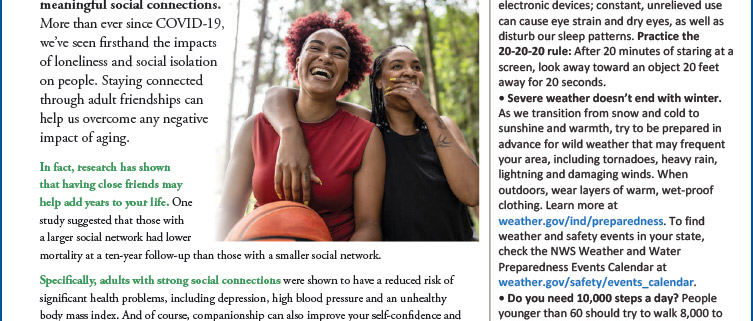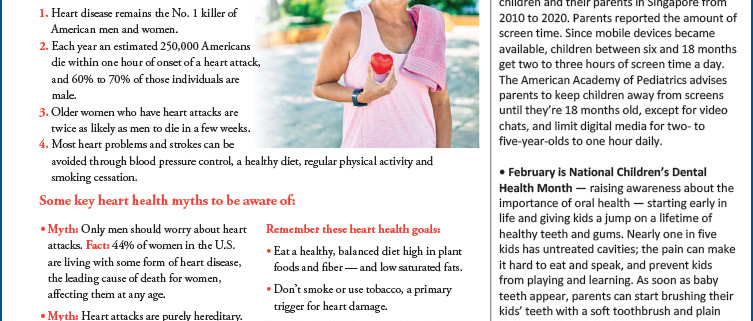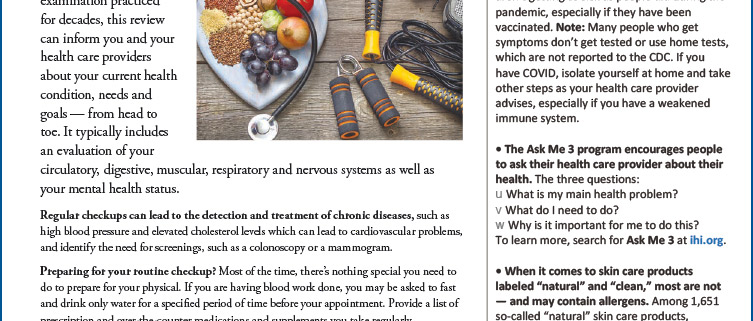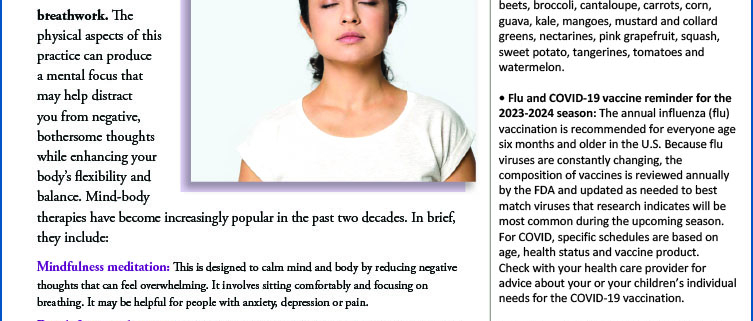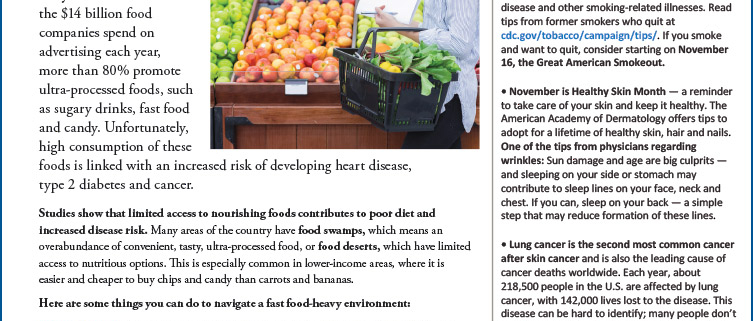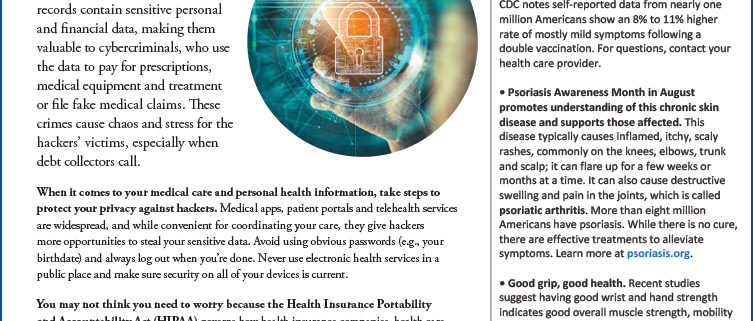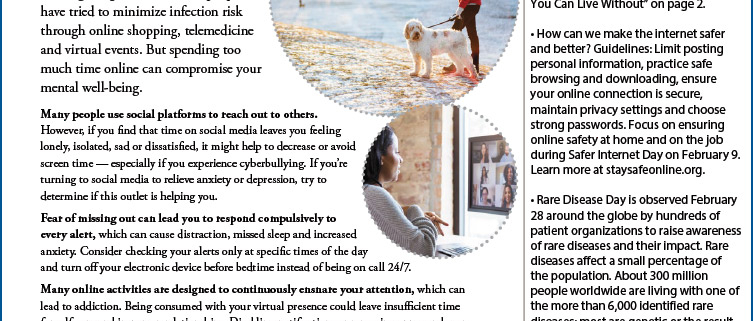News
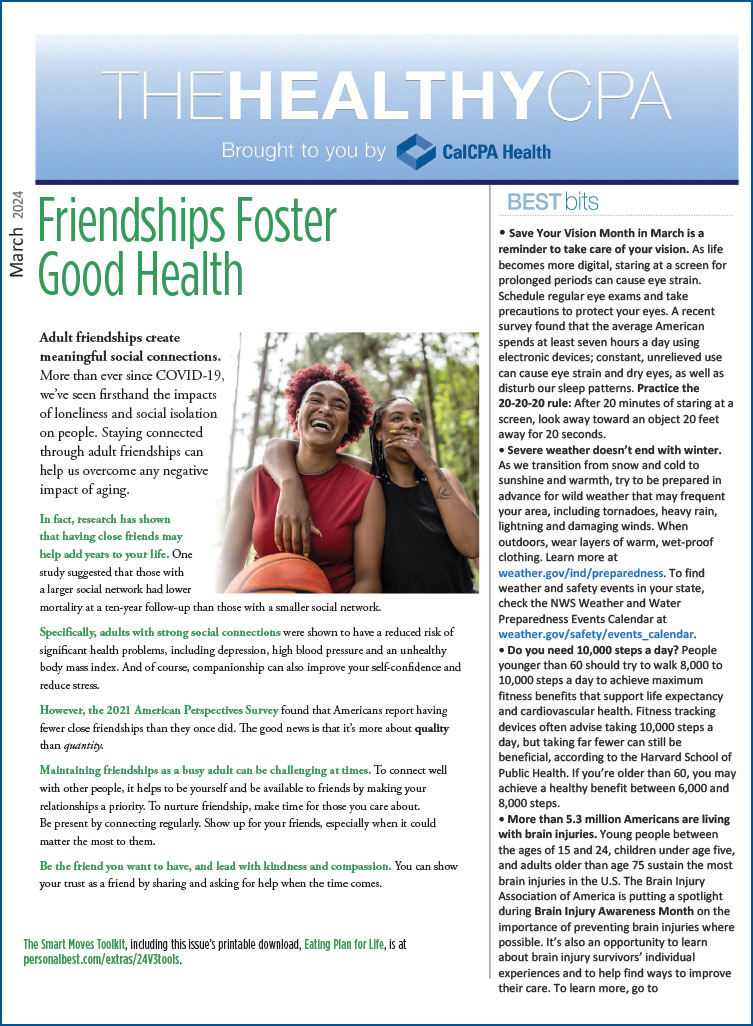 The eMagazine dedicated to improving members’ well-being
The eMagazine dedicated to improving members’ well-being
- Friendships Foster Good Health
- How much sleep do you need?
- Benefits of Weighted Gloves
- Dietitian’s Grocery List
- Daylight Saving Time and Your Health
- Extend Your Ladder Knowledge
- Slow Down Racing Thoughts
In each issue you will find information and inspiration to help you with your health and wellness goals.
February marks Heart Health Awareness Month, a time dedicated to raising awareness about cardiovascular health and encouraging individuals to take proactive steps toward maintaining a healthy heart. Heart disease remains one of the leading causes of death globally, highlighting the importance of understanding how to care for our hearts. According to the Centers for Disease Control and Prevention (CDC), about 695,000 people died from heart disease in 2021 in the United States which is 1 in every 5 deaths. * This month we will look at some important aspects of heart health, risk factors for heart disease, and tips for maintaining a healthy heart. Read more
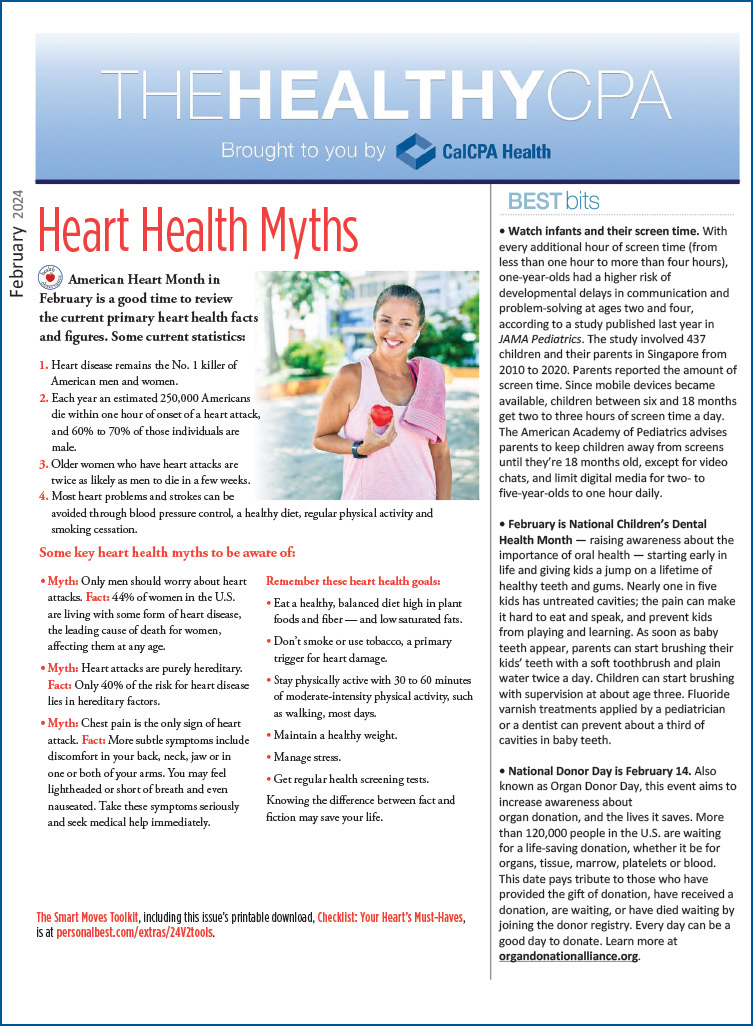 The eMagazine dedicated to improving members’ well-being
The eMagazine dedicated to improving members’ well-being
-
- Heart Health Myths
- Best Moves for Your Heart
- Dietary Supplements
- What is a Plant-Based Diet?
- Lemon-Butter Halibut
- Slow Down Racing Thoughts
In each issue you will find information and inspiration to help you with your health and wellness goals.
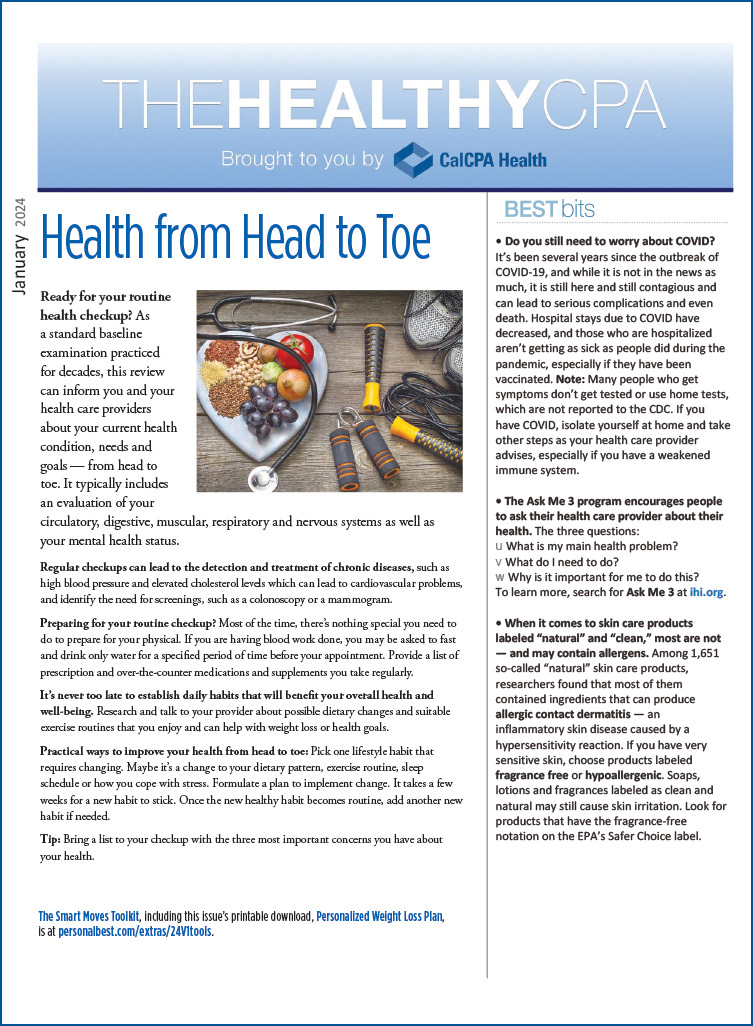 The eMagazine dedicated to improving members’ well-being
The eMagazine dedicated to improving members’ well-being
- Health from Head to Toe
- Balancing Work, Life and Caregiving
- Lunge into Health
- STUDY: High Blood Pressure and Alcohol
- Curb Nighttime Eating
- Plastic Food Packaging
In each issue you will find information and inspiration to help you with your health and wellness goals.
 The eMagazine dedicated to improving members’ well-being
The eMagazine dedicated to improving members’ well-being
- Everyday Relaxation Guide
- Year-End Health Assessment
- Online Pharmacies
- The Art of Delegating
In each issue you will find information and inspiration to help you with your health and wellness goals.
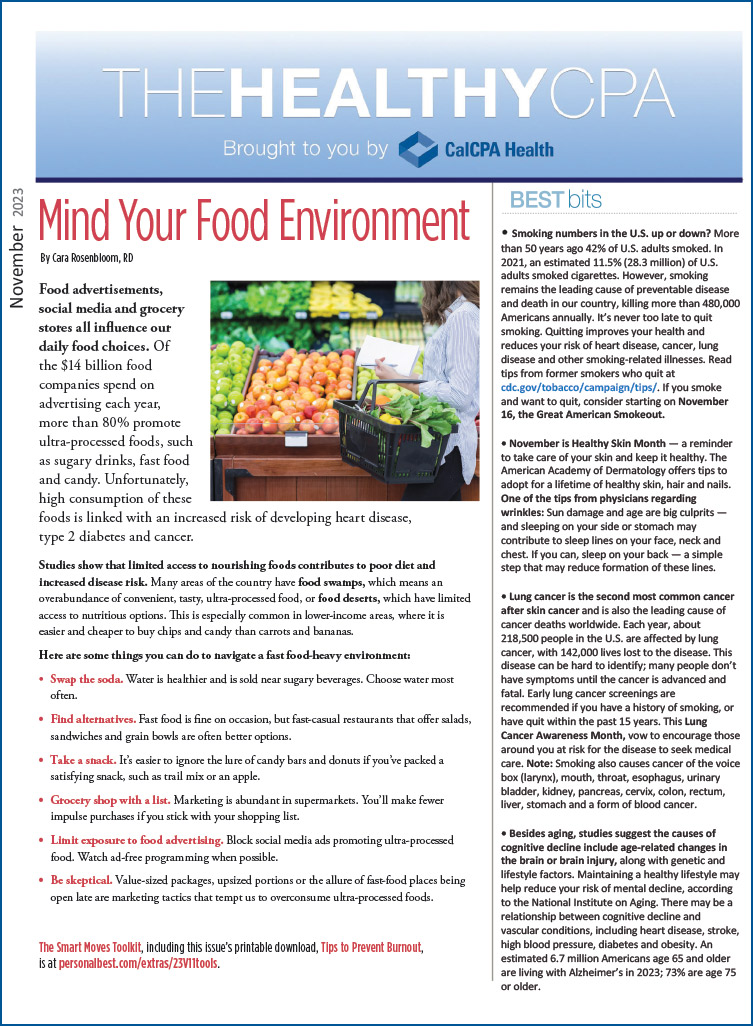 The eMagazine dedicated to improving members’ well-being
The eMagazine dedicated to improving members’ well-being
- Mind Your Food Environment
- November is Diabetes Month: Prediabetes Action Plan
- Omega Fat Matters
- Screen Time Assessment
In each issue you will find information and inspiration to help you with your health and wellness goals.
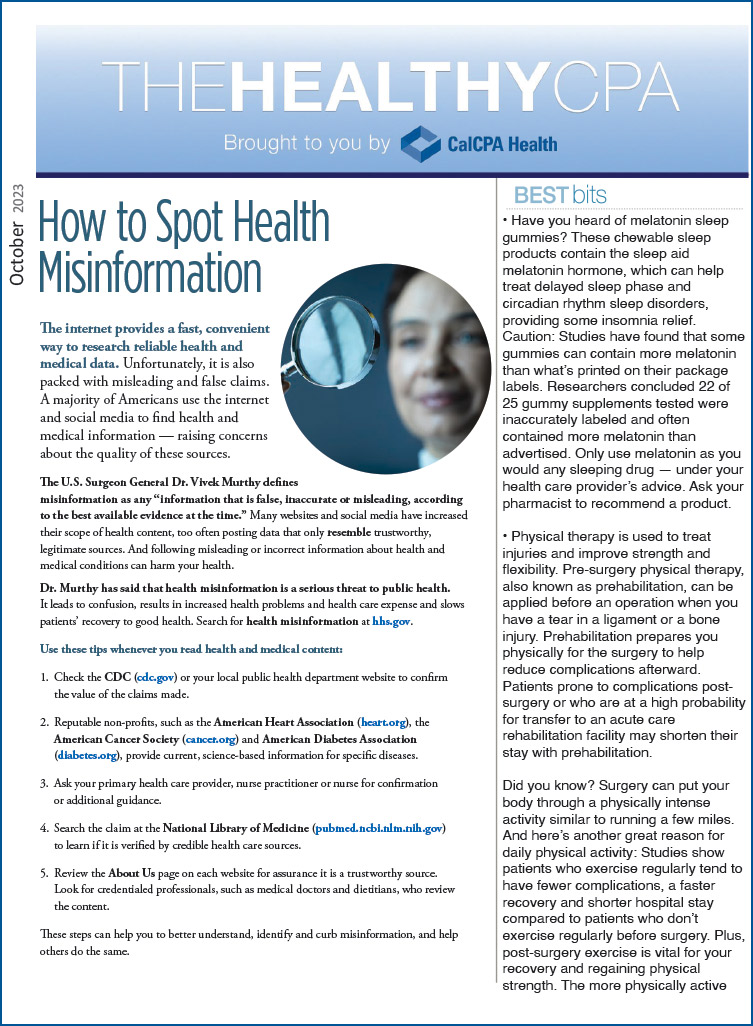 The eMagazine dedicated to improving members’ well-being
The eMagazine dedicated to improving members’ well-being
- How to Spot Health Misinformation
- Strength Training for Beginners
- National Depression Screening Day on October 5
- October is Breast Cancer Awareness Month
- What is Anemia?
In each issue you will find information and inspiration to help you with your health and wellness goals.
 The eMagazine dedicated to improving members’ well-being
The eMagazine dedicated to improving members’ well-being
- Protect Your Medical Identity
- What Your Gut is Telling You
- Productivity Checkup
- Intermittent Fasting
- Stay Well Menu
- What are migraine auras?
In each issue you will find information and inspiration to help you with your health and wellness goals.
The Internal Revenue Service released the annual maximum 2024 contribution limits for HSAs under high deductible health plans (HDHPs). For 2024, we will see the largest jump in recent years for contribution limits – mainly due to continued high inflation. The annual limit on HSA contributions for an individual will be $4,150 (up from $3,850 in 2023) and $8,300 for family coverage (up from $7,750 in 2023). HSA “catch-up” contribution for participants 55 and older, can contribute an extra $1,000 to their HSA, which is the current amount in place for 2023.
Effective January 1, 2024 – Contribution Limits for Health Savings Accounts
| Tax Year | Individual Coverage Limit | Family Coverage Limit |
| 2024 | $4,150 | $8,300 |
| 2023 | $3,850 | $7,750 |
| 2022 | $3,650 | $7,300 |
| At age 55, members are allowed to contribute an additional $1,000 | ||
What is a HSA? It is a tax-advantaged account, paired with a high-deductible health insurance plan (HDHP), that allows you to save pre-tax dollars for future qualified medical expenses. You can invest the funds in the HSA account tax-free and grow your savings. You own the account, it travels with you if you change jobs, change your health plan, or retire.
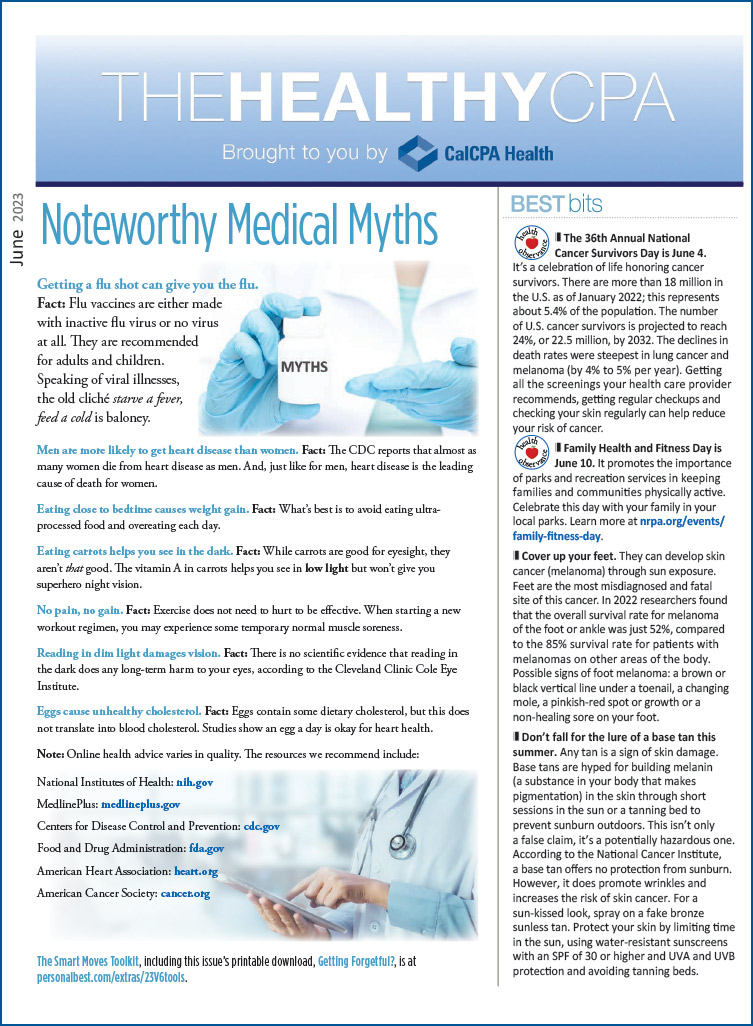 The eMagazine dedicated to improving members’ well-being
The eMagazine dedicated to improving members’ well-being
- Noteworthy Medical Myths
- Medication Interactions
- Do you have a healthy relationship with social media?
- What are Functional Foods?
- Mental health self-care tips
- Save a Life with CPR
In each issue you will find information and inspiration to help you with your health and wellness goals.

